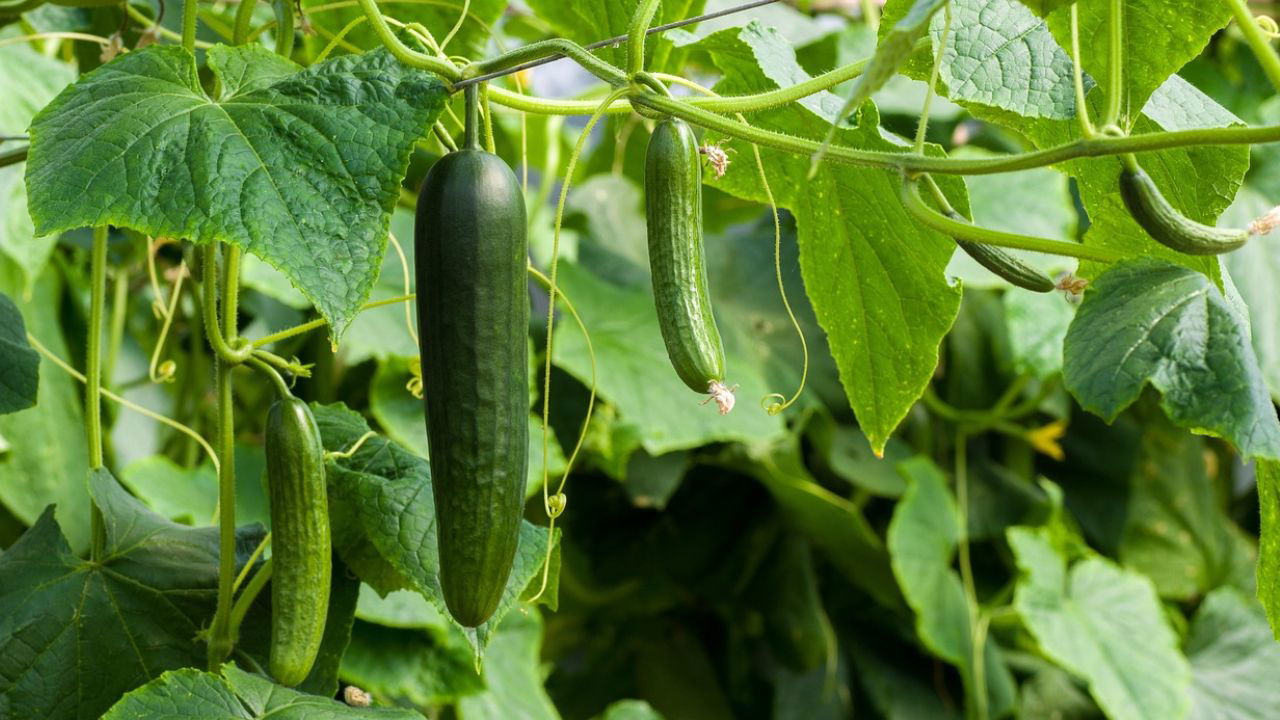
Cucumbers are one of the most versatile and economically beneficial crops grown during the Zaid season, which typically occurs between the Rabi and Kharif seasons (March to June). Known for their refreshing taste and high water content, cucumbers are a favorite in salads, sandwiches, and various culinary dishes. Additionally, they are relatively easy to grow, making them a popular choice among farmers. With the right techniques and care, farmers can achieve a bountiful cucumber harvest.
Why Cucumbers Are the Best Choice for Growing in the Zaid Season
-
High Market Demand: Cucumbers are in high demand, especially during the hot summer months. Their cooling properties make them a popular choice among consumers, ensuring a steady market and good returns for farmers.
-
Easy to Grow: Cucumbers are relatively easy to cultivate, requiring minimal inputs compared to other crops. They thrive in warm, well-drained soils and can be grown either on the ground or on trellises to save space and improve yield.
-
Short Growing Cycle: Cucumbers have a short growing cycle, typically maturing within 50 to 70 days. This quick turnaround allows farmers to harvest and sell their produce promptly, generating income within a short period.
-
Nutritional Value: Cucumbers are packed with essential nutrients, including vitamins C and K, potassium, and antioxidants. Their health benefits make them a popular choice among health-conscious consumers, further boosting their market value.
-
Water Efficiency: Cucumbers have a relatively high water content but do not require excessive watering. With proper irrigation management, farmers can efficiently grow cucumbers without depleting water resources.
-
Versatility in Uses: Cucumbers can be used in a variety of ways, from fresh consumption to pickling. This versatility adds to their market appeal and provides farmers with multiple avenues for selling their produce.
-
Pest and Disease Management: While cucumbers can be susceptible to pests and diseases, integrated pest management (IPM) techniques and the use of disease-resistant varieties can help mitigate these challenges. Proper crop rotation and soil health management also play a crucial role in ensuring a successful harvest.
Procedure and Cultivation Practices for Growing Cucumbers
- Selecting the Right Variety
Cucumbers come in two main types: slicing and pickling. Choose a variety based on your needs and growing conditions. Popular varieties include:
-
Slicing Cucumbers: 'Marketmore,' 'Straight Eight'
-
Pickling Cucumbers: 'Boston Pickling,' 'National Pickling'
These varieties offer benefits such as high yield potential, disease resistance, uniform shape, excellent flavor, and adaptability to different growing conditions, ensuring strong market demand.
- Preparing the Soil
Cucumbers thrive in well-drained, fertile soil with a pH level between 6.0 and 6.8. To prepare your soil:
-
Test the Soil: Conduct a soil test to check pH and nutrient content.
-
Amend the Soil: Add organic matter like compost or well-rotted manure to enhance soil fertility and structure.
- Sowing Seeds or Transplants
Cucumbers can be grown from seeds or transplants. Here's how:
-
Direct Seeding: Sow cucumber seeds directly into the soil after the last frost. Plant seeds about 1 inch deep, spaced 12 inches apart in rows.
-
Transplanting: Start seeds indoors 3-4 weeks before the last frost. Transplant seedlings outdoors once they have two to three true leaves and the soil has warmed up.
- Providing Adequate Water
Cucumbers need consistent moisture:
-
Water Regularly: Provide 1-2 inches of water per week through rainfall or irrigation. Water at the base to avoid wetting the leaves.
-
Mulch: Apply mulch around the plants to conserve moisture, suppress weeds, and maintain soil temperature.
- Supporting the Plants
Cucumbers can be grown on the ground or trained on trellises. Here’s how to support them:
-
Ground Growing: Space plants adequately to allow for spreading and ample room for vines.
-
Trellising: Use trellises to support cucumber vines, saving space, improving air circulation, and making harvesting easier.
Common trellising types include:
-
Vertical Trellis: Simple structure for plants to climb.
-
A-Frame Trellis: Two panels forming an A-shape to support plants from both sides.
-
Arched Trellis: Creates a tunnel or archway for plants to grow over.
-
Horizontal Trellis: Supports plants spreading out horizontally, ideal for grapevines.
- Managing Pests and Diseases
Cucumbers are susceptible to pests and diseases, but these can be managed:
-
Pests: Common pests include cucumber beetles, aphids, and spider mites. Use row covers, organic insecticides, and beneficial insects to control pests.
-
Diseases: Powdery mildew, downy mildew, and bacterial wilt are common. Use disease-resistant varieties, practice crop rotation, and ensure good air circulation for better disease management.
- Harvesting
Cucumbers are ready to harvest when they reach the desired size:
-
Frequent Harvesting: Pick cucumbers regularly to encourage continued production. Overripe cucumbers can become bitter and reduce yield.
-
Proper Handling: Handle cucumbers gently to avoid bruising. Store them in a cool, humid environment to maintain freshness.
Cucumbers offer numerous benefits as a Zaid crop, including strong market demand, ease of cultivation, a quick growing cycle, high nutritional value, water efficiency, versatility, and manageable pest and disease challenges. By following the best cultivation practices, farmers can achieve a successful and profitable harvest.
















